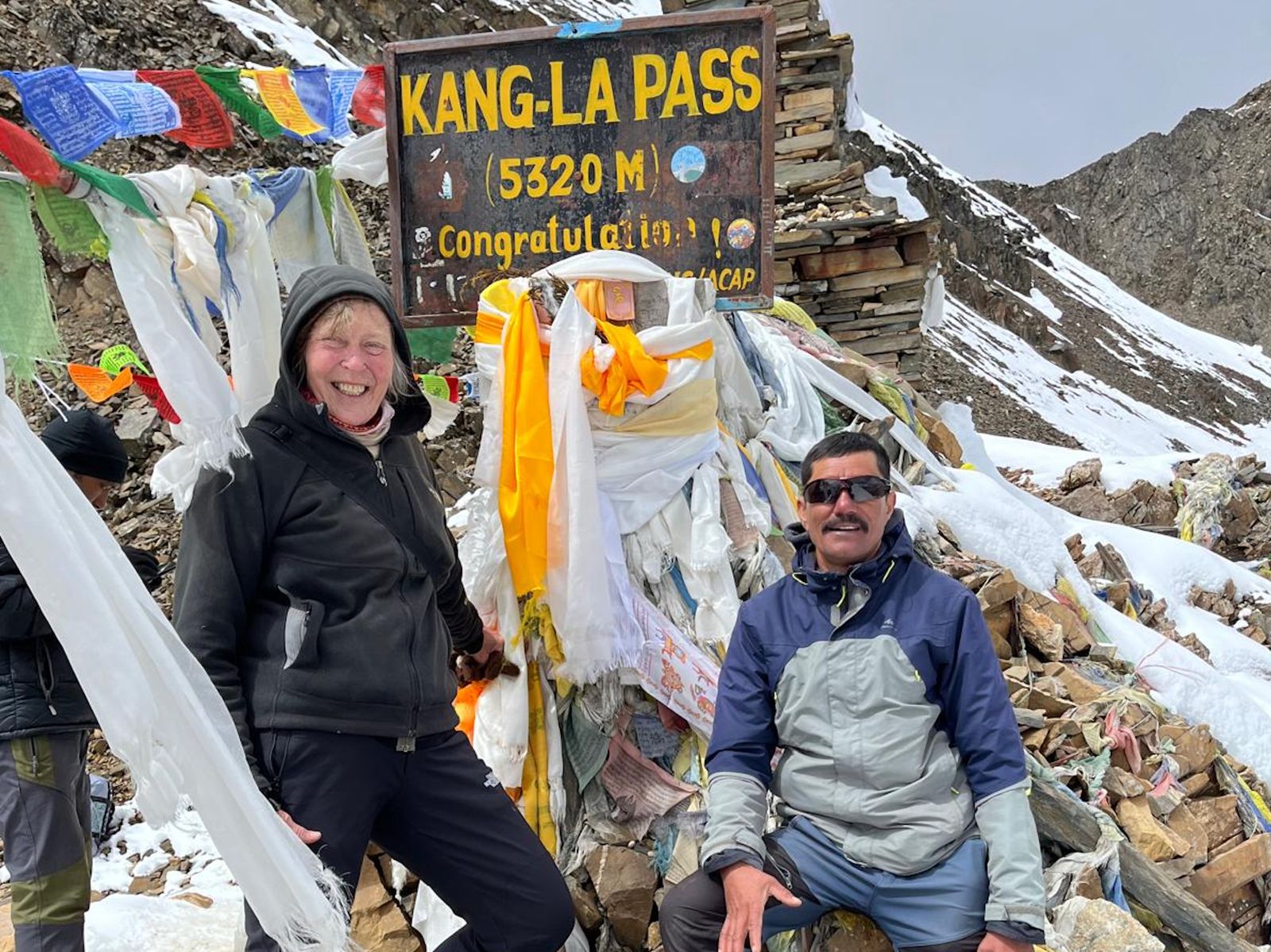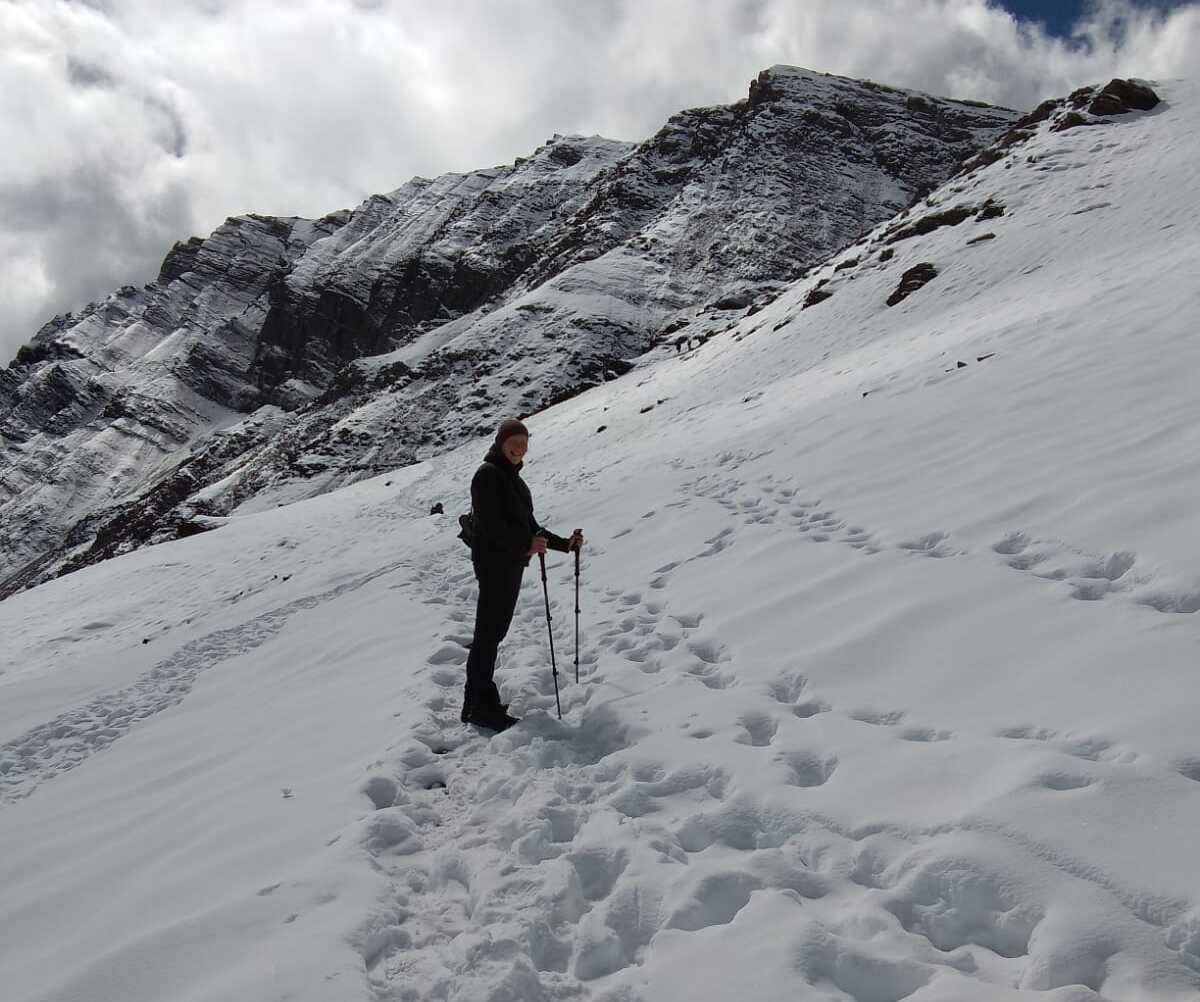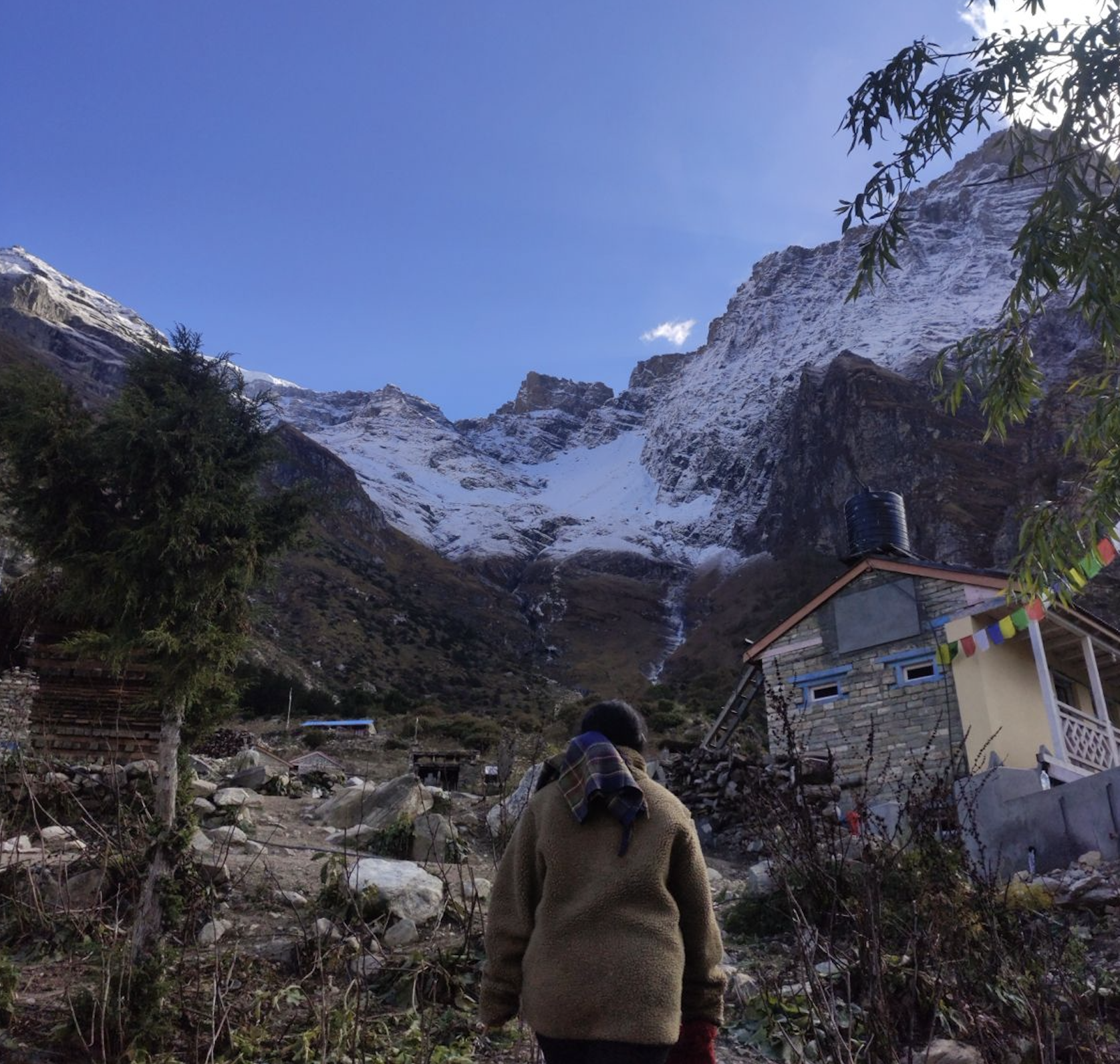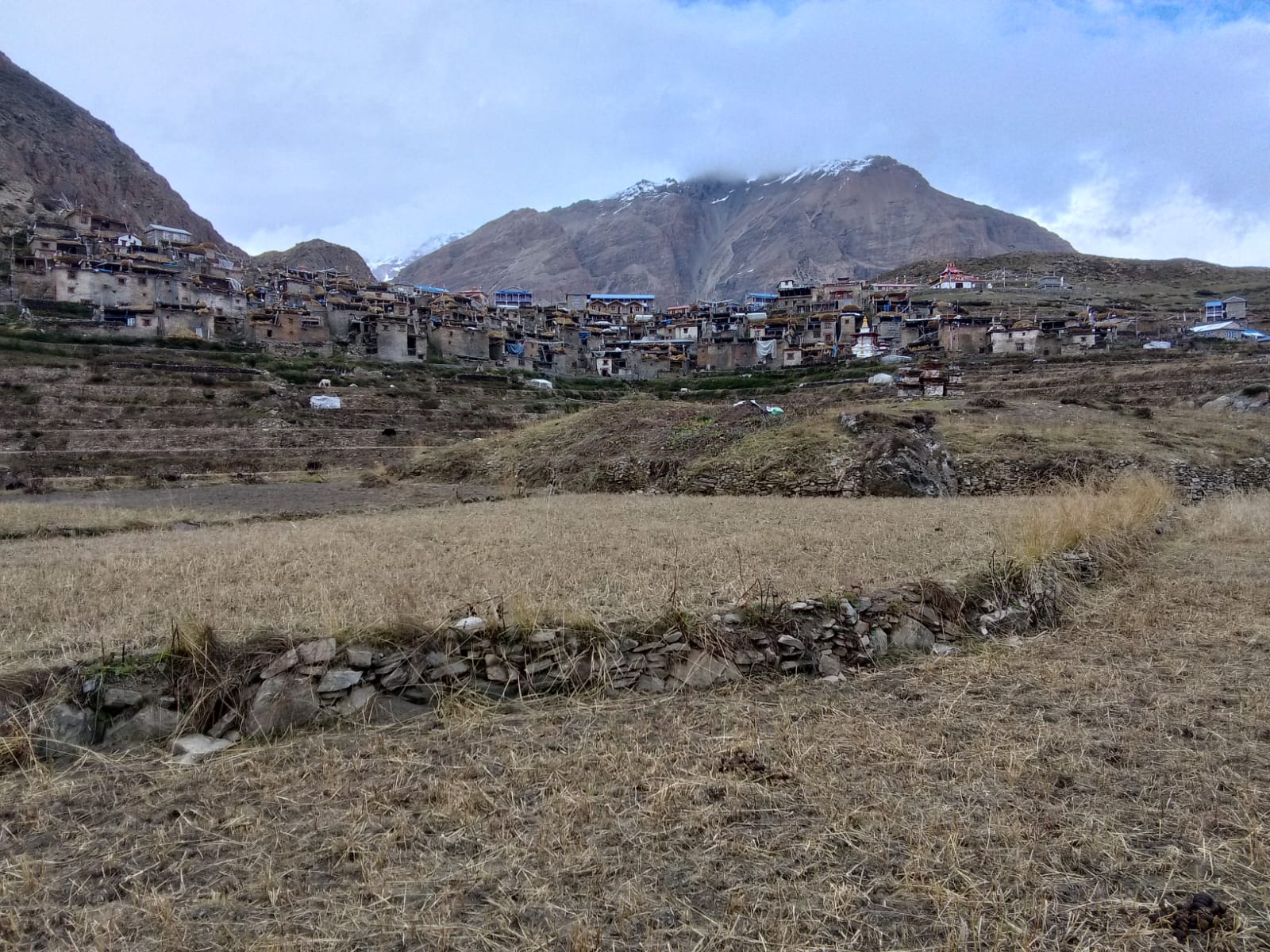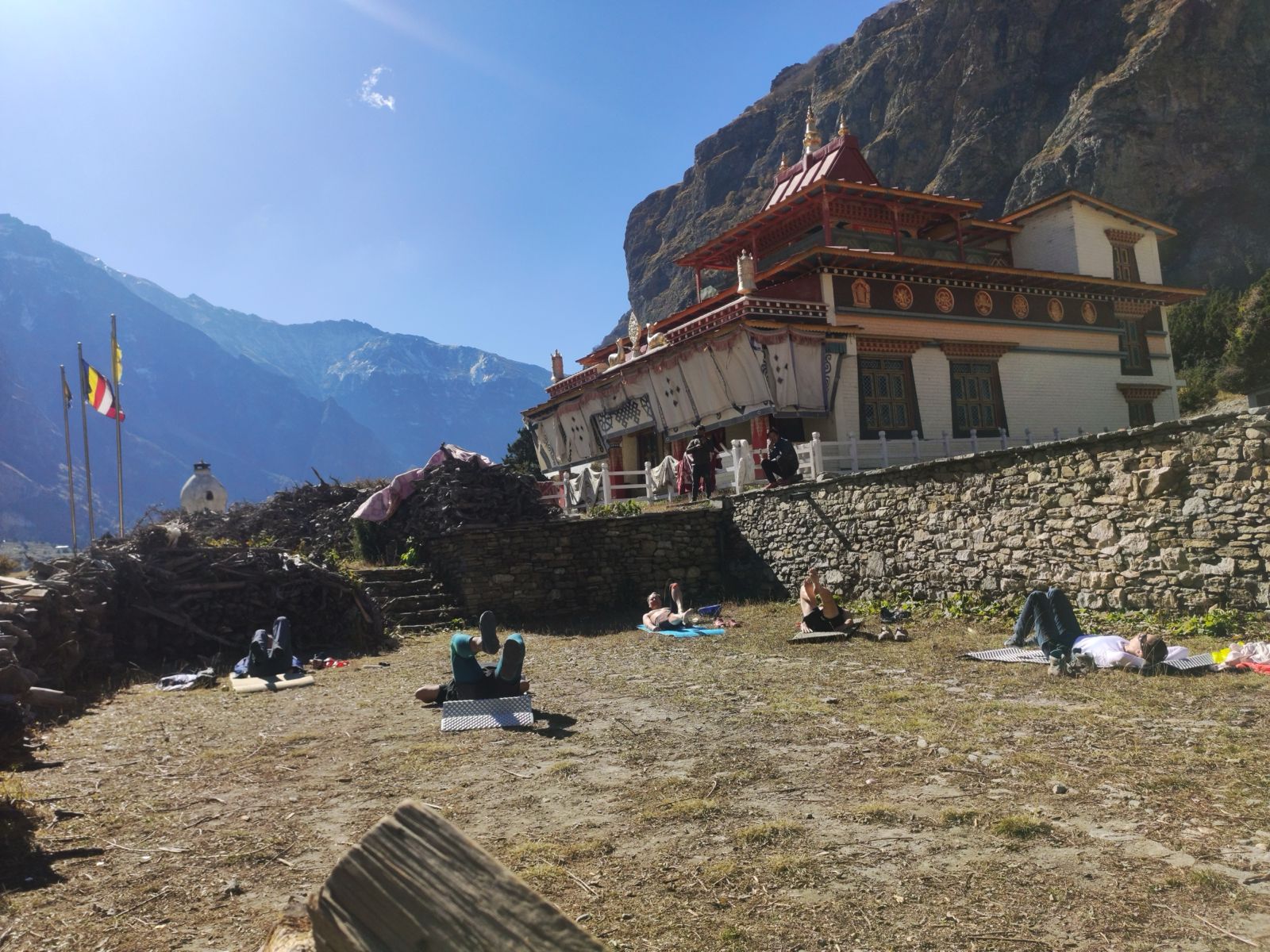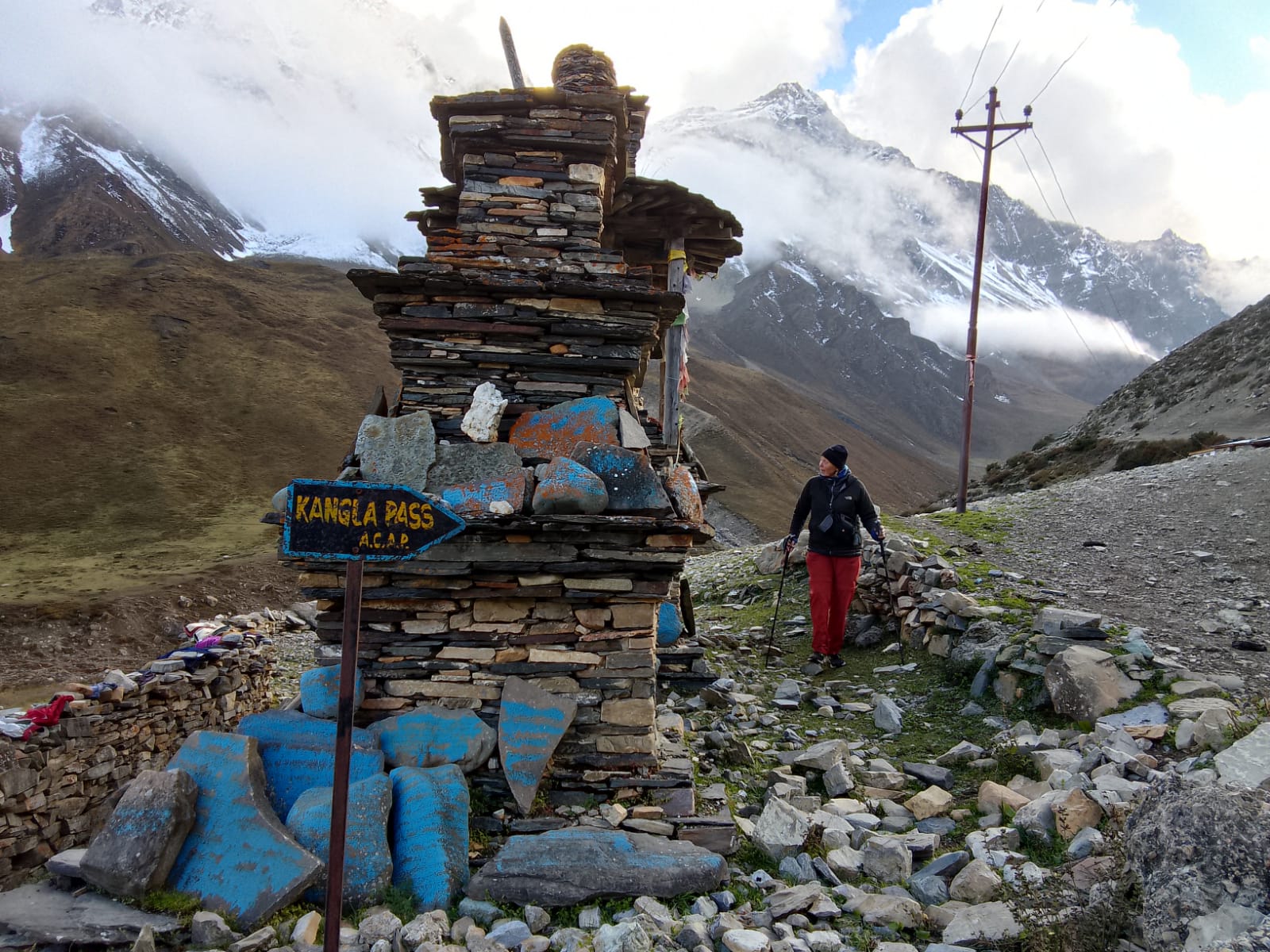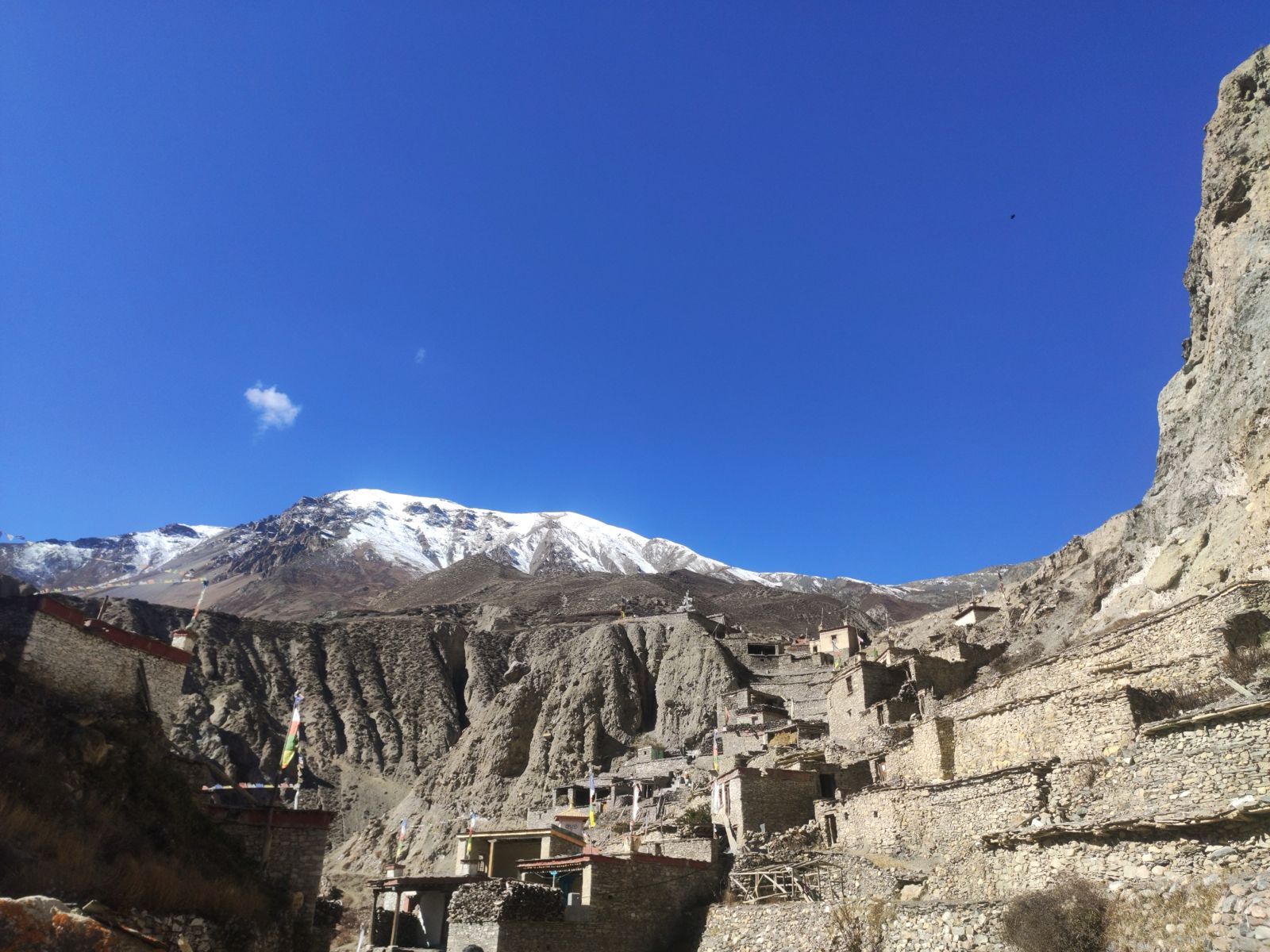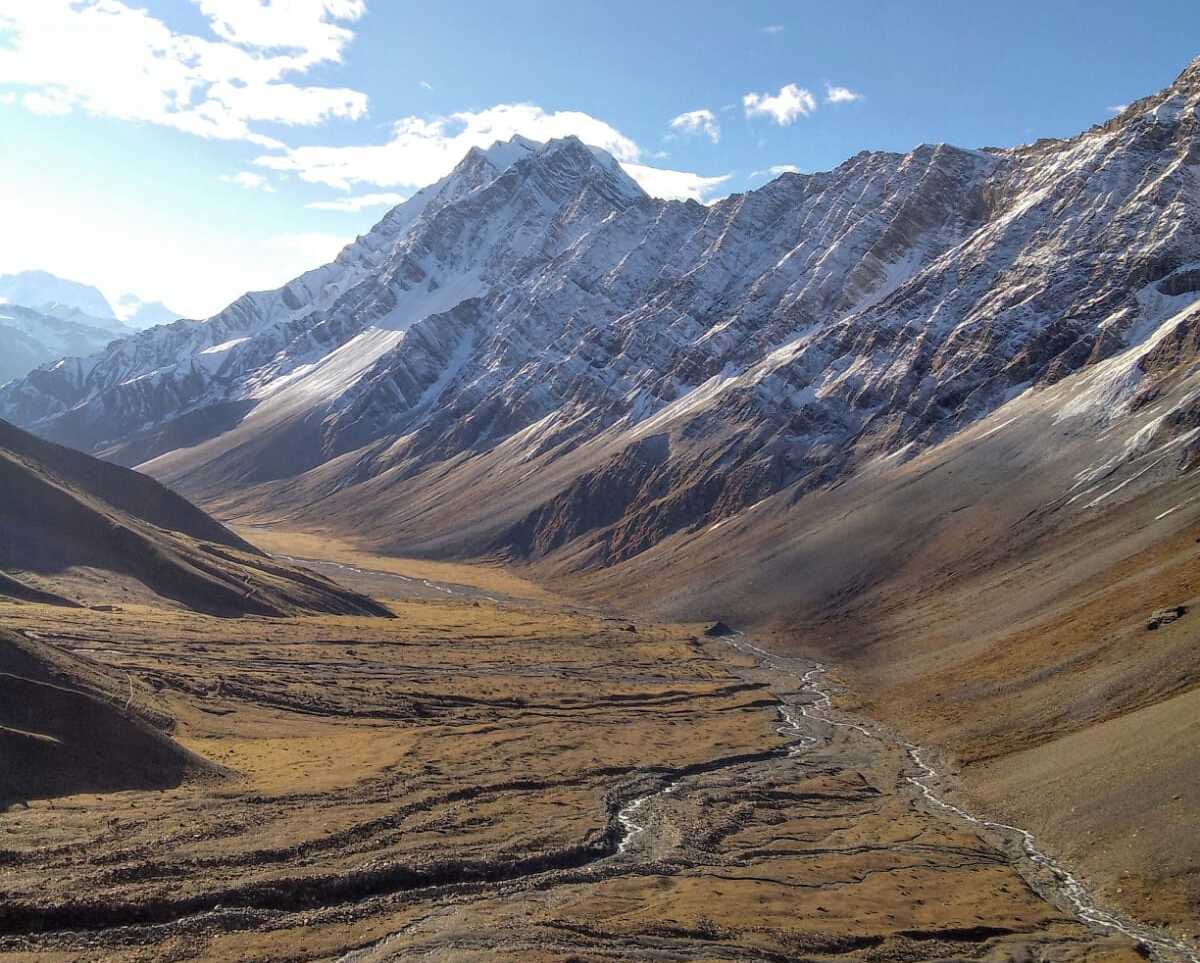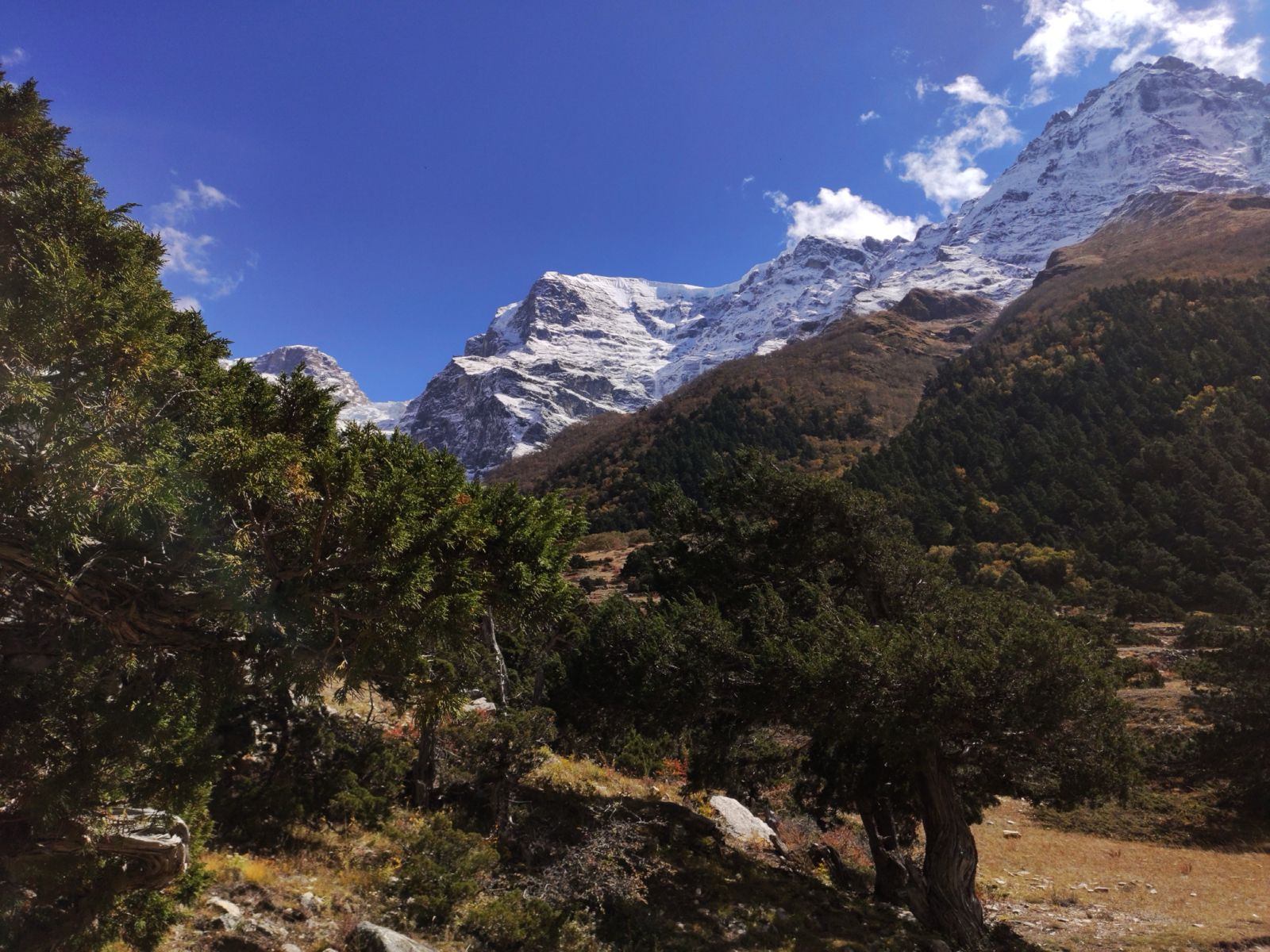Nar Phu Valley Trek
5(49)
Detailed Itinerary for Nar Phu Valley Trek
Your Journey, Step by Step
Inclusions
What’s Covered in Your Adventure
- Airport Transfers – Pick-up and drop from Kathmandu Airport in private car
- Accommodation – Three-star Kathmandu hotel with breakfast and small trek en-route teahouses
- Meals – All meals (breakfast, lunch, and dinner) on your trek day, and also tea/coffee
- Transportation – Jeep drives between trailheads and Kathmandu by sharing Jeep and Return Jeep transport from Chame to Besisahar and back to Kathmandu
- Permits – All the necessary permits (Annapurna Conservation, Nar Phu Restricted Area, and TIMS card)
- Guide and Porters – English-speaking guide and porter to carry your luggage (1 porter for 2 trekkers)
- Safety Equipment – Altitude pulse oximeter, oxygen, first aid kit, and altitude sickness medicine
- Taxes & Fees – Included government taxes
- International Flights – Your international flight to and from Nepal
- Travel Insurance – Ensure it includes high-altitude helicopter evacuation
- Personal Expenses – Snacks, beverages, Internet, and battery charging
- Tips – Porter and guide tips
Maps
Navigate Your Journey
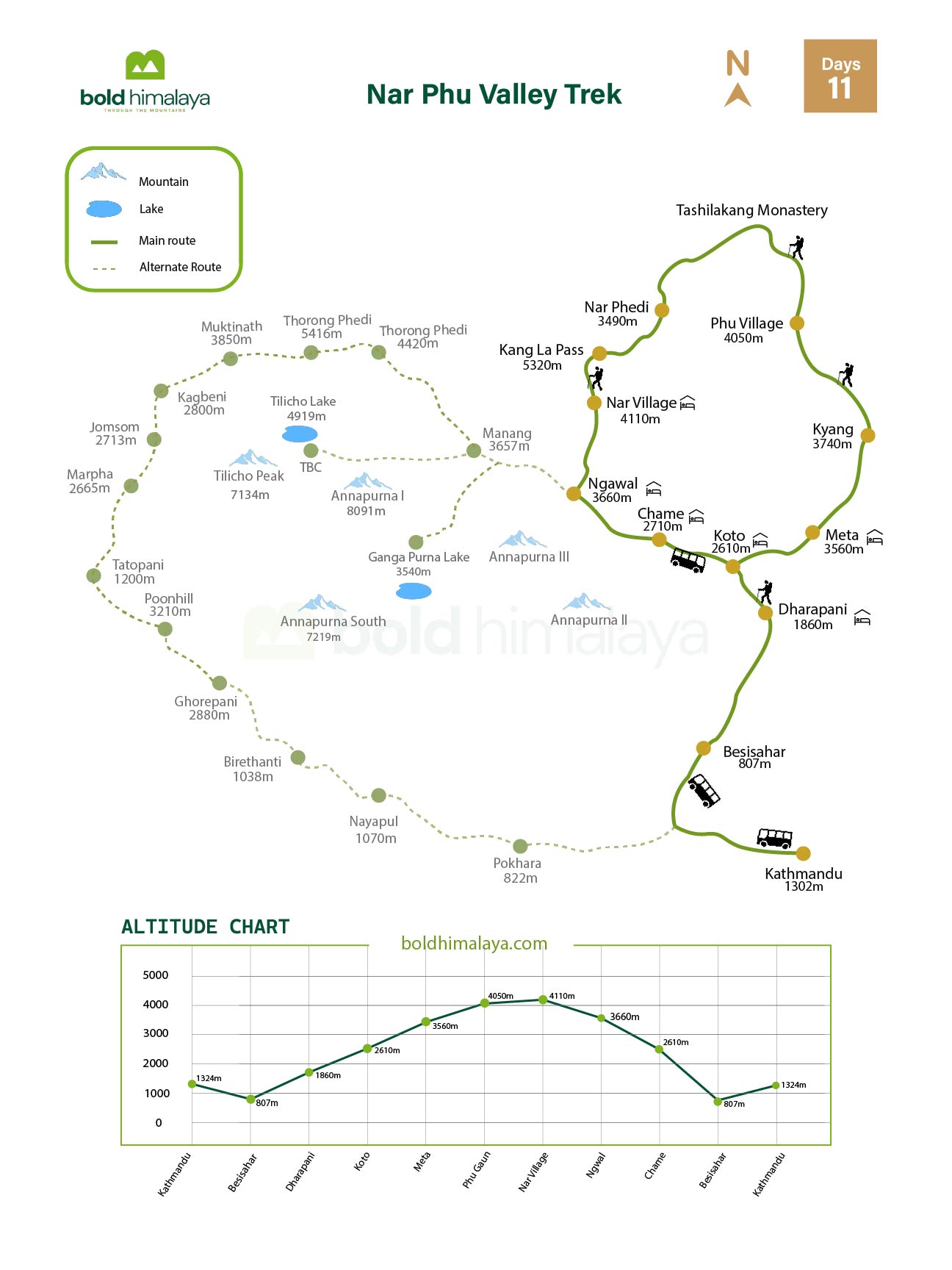
Good to Know
Things to Remember
2. Trek Accommodation
Your lodging is all part of the adventure! You will have clean, hot shower, 3-star hotels in Kathmandu, but in the picturesque Nar and Phu villages, you’ll have the typical mountain life in simple teahouses. Enjoy basic rooms (generally shared), shared bathrooms, and hot showers for a few extra rupees – but believe us they’re worth it after a day’s hiking! The further up you climb, the more Spartan your accommodation will be, so bring a decent sleeping bag rated to -10°C in which to sleep soundly beneath starry Himalayan skies.
3. Meals and Eating Options
Your trekking food will be simple, straightforward, and just what your body is craving after working for mountain trails! Your standby companion will be the old faithful Dal Bhat (rice, lentil soup, and vegetables) – “Dal Bhat power, 24 hour” the locals chant for a very good reason. You’ll be indulged in delicious Tibetan bread, momos (doughnuts) fresh from the heat, fried rice, noodles, and soothing Thukpa (noodle soup). Meat is not necessary but we recommend keeping to veggie since refrigeration is not much at high elevation. Hot drinks are readily available wherever you happen to be, perfect for warming hands up while enjoying stunning scenery. Remember the higher you ascend (such as you!), the more things cost so it’s always a good idea to have some energy bars and trail mix with you.
4. Trek Difficulty and Physical Conditioning
This moderately challenging trek will challenge you enough that the sense of victory will be amazing! Expect 5-7 hours of walking each day on trails that range from gentle tracks to steep, rocky trails. The biggest challenge? The climb of breathtaking Kang La Pass at 5,240m, where high altitude and steep inclines test you to the limit. Don’t worry – with a bit of creativity, beginners can tackle this trek! Train a month before your trip: get yourself used to taking long walks or treks, get those legs moving with squats and lunges, and perform your cardio by swimming or cycling. The reward for the effort? Looking down at the world with literally breathtaking views (although that could also be due to the altitude!).
5. Nar Phu Valley Trek Permits
Your tickets to this secret haven are two special permits: The Restricted Area Permit (RAP) to Nar Phu Valley ($100 per person, first week, then $15 per day) and the Annapurna Conservation Area Permit (ACAP) for $30 per person. Something that differs in this trek from most Nepali treks is that you can’t undertake this one independently – only registered trekking agents can get permits, so the region is blessedly unspoiled and untouristy. Bring photocopies of your passport and recent photos for processing. Consider these permit costs as your donation to the preservation of this lovely country and welfare of local inhabitants who welcome you to their mountain fairy-tale kingdom.
6. Altitude Sickness and Acclimatization
Your body will notice it when you exceed 3,000 meters – and it will complain a bit! Altitude sickness is infectious to any victim, however physically fit, and appears in the form of headaches, dizziness, nausea, and shortness of breath. What’s the secret to avoiding it? Take it easy and go slowly. Our carefully designed itinerary also includes rest days at Meta and Nar, where your body adapts to the reduced oxygen at a gradual level. Be extremely well hydrated (3-4 liters daily), don’t consume alcohol (miss the party this time!), and listen to your body. If it worsens, sole treatment is immediate descent. Carry Diamox as a precaution, if necessary, but best medicines are patience and respect for high altitude.
7. Packing List: The Essential Trekking Gear
Pack wisely and you’ll thank yourself step by step! Your equipment is: moisture-wicking base layers (no cotton!), down insulated jacket, waterproof outer layers, sturdy broken-in hiking boots, warm gloves, warm hat, and good quality socks. In terms of equipment, bring a comfortable 30-40L pack, -10°C sleeping bag, trekking poles (your knees will thank you!), good sunglasses, and a headlamp for reading menus in teahouses in the dark. Don’t leave behind some sunscreen (mountain sun is strong!), lip balm, limited toiletries, a limited first-aid kit, and water purification tablets. Electronics? Bring a power bank, extra camera batteries, and an international adapter so you’re charged when there’s the chance. Heed the trekker’s golden rule: every item more = weight on your back more!
8. Safety and Trekking Rules
Your trek should be enjoyable, not risky! Withdrawal from civilization in Nar Phu Valley requires led trek – you do not wish to be here alone, struggling to flail around. Bold Himalaya guides are first aid trained and ready for altitude sickness and have intimate knowledge of each trail and cutback. The small group trek offers perfect protection and perfect immersion, so you meet new individuals and ensure everybody arrives home in a single piece. Our guides monitor weather, trail, and your health in real time. Helicopter rescue in an emergency can be organized (make sure your insurance includes this!); the golden rule is simply to heed your guide’s instructions – they are your lifeline in the high Himalayas.
9. Electricity, Internet, and Communication
Now for the digital detox! Electricity will be available in most teahouses at a charge of $2-$5 for device charging. A good power bank is gold here! Internet signal is at best intermittent – you’ll have paid Wi-Fi at some of the lower altitude treks, but signal becomes increasingly intermittent as you ascend higher in Nar Phu Valley. Nepal Telecom (NTC) or Ncell SIMs will function at lower altitudes but don’t count on signal in remote valleys. Don’t fret about being completely cut off, though – Bold Himalaya does provide a daily safety report with guides. The payoff? Being removed from man-made civilization means you can fully engage with the stunning natural one you’re immersed in!
10. Travel Insurance: Mandatory Requirement
No joke – this is a requirement! Your insurance for this trek must cover high-altitude trekking up to 6,000m, emergency medical treatment, and helicopter rescue. Also, cover trip cancellation, theft, and accidental bodily injury. Confirm with your provider, prior to purchase, in writing, if their policy includes helicopter evacuation at high altitude – most general travel policies don’t! You will be required to provide insurance details in advance of your trek so that swift action can be taken if required. Consider good insurance as your behind-the-scenes security blanket so that you can worry less about what could go wrong and more about what’s important – the fantastic trek in one of Nepal’s most stunning secret valleys!
FAQs
Your Questions, Answered
2. Do I require special permits?
Yes, we will organize your Nar Phu Restricted Area Permit and Annapurna Conservation Permit for you.
3. What is the best time?
Spring (March-May) and autumn (September-November) are best time with best weather and stunning mountain scenery.
4. How will be the accommodation?
Simple, welcoming mountain teahouses with bunks, a generous supply of a decent three-star Kathmandu hotel.
5. Will there be electricity and Wi-Fi?
There is power and Wi-Fi in a few teahouses at a small extra cost.
6. What do I bring with me?
Sleeping bag, hat, rain clothing, sun cream, trekking poles, and water purification tablets.
7. How can I avoid altitude sickness?
Go slowly, keep your body hydrated, and take your guide’s advice.
8. Are there ATMs on the trail?
No ATMs after besisahar- take plenty of Nepalese rupees with you.
9. Is the trek a beginner's?
More moderately challenging for the average walker due to remoteness and altitude considerations.
10. What wildlife might I have a chance of seeing?
Blue sheep, Himalayan tahr, snow leopards (rarely seen), and a few of the Himalayan birds like Himalayan monals.
11. What if there is an emergency?
We have first aid kits with our guides, and helicopter evacuation is organized (under your travel insurance).
12. Can I customize my trek?
No problem, and we will incorporate all that into your own interests, physical capacity, and time constraints.
View OurSimilar Packages
Discover our top tours, loved by thousands of travelers annually. Choose the adventure that inspires you and embark on a journey tailored to your desires.

Nar Phu Valley with Annapurna Circuit Trek
Looking for a lifelong Himalayan experience? Nar Phu Valley with Annapurna...
Save 19%
Annapurna and Mardi Himal Base Camp Trek
Annapurna Base Camp and Mardi Himal Combined Trek is an excellent...
Save 29%
Annapurna Circuit Trek
One of the most famous trekking routes in the world is...
Save 13%





